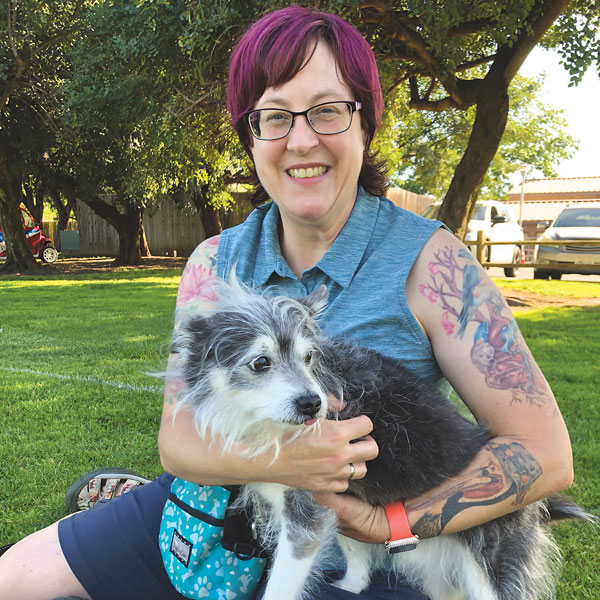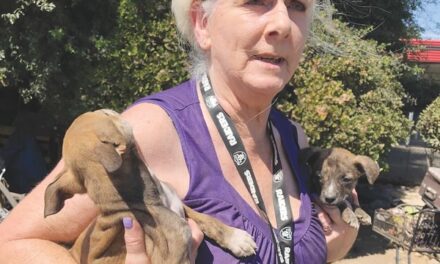At home, Albert is calm and relaxed, indifferent to cats and other canines. The scruffy mutt takes treats with gentility and shares toys like a gentleman.
Leashed walks are a different story. At the sight of another dog, large or small, Albert is a model for leash aggression.
“He barks and spins uncontrollably and aggressively,” Albert’s owner Nicole Martin says. “And lunges in the direction of the other dog.”
Dogs with leash aggression, also called fear reactivity, will bark, lunge, snarl and snap at other dogs, sometimes people, while on leash. An afternoon stroll becomes a physical and emotional struggle for dog and owner.

“A lot of different variables can contribute to a dog being reactive on leash,” says trainer Dana McKellips, owner of Peaceful Pets Pet Care in Sacramento. Fear, anxiety, lack of socialization and past negative experiences can be contributing factors.
Leashing a dog takes away his choice of flight, McKellips says. “When a dog sees a trigger, they go into fight or flight mode.” A leashed dog cannot escape, and instead becomes aggressive to protect himself.
The negative reaction increases when the stimulus or trigger moves closer into the dog’s comfort zone.
When the dog barks, the threat moves away. “In their minds that behavior worked, so in the absence of other coping skills they will continue to rehearse that behavior,” McKellips says.
“Your dog is not trying to be bad. They are having big feelings about something and don’t know what else to do.”
McKellips suggests walking dogs in areas where they are less likely to encounter triggers. When the canine comes across another dog, calmly move away.
“Don’t pull over and have your dog stop to wait for it to pass,” McKellips says. “This increases the time that your dog is seeing the trigger.” If a trigger is walking toward your dog, create distance by crossing the street or changing direction. “Distance is your friend.”
Play the “search” game. When another pooch is in sight, throw high-value treats in front of your dog and say “search.” This distracts the dog, keeping him focused on treats instead of the other canine.
“We avoid other dogs and keep Albert focused on us with training treats,” says Martin, who lives with her family in Arden Park. “We also talk to him in an attempt to calm him down and pick him up in order to walk away.”
McKellips says never punish or yell, which can increase fear and anxiety, and make negative behaviors worse.
“Your dog’s feelings may not make sense to you, but they are valid and very real to them,” McKellips says. “Punishment tells your dog that what they are feeling doesn’t matter and can lead to more behavior issues and deteriorate your relationship with your dog.”
A professional trainer who specializes in behavior modification can help manage or reduce leash reactivity. Learning basic commands will ease stress and anxiety on walks.
A trainer can also evaluate the dog to determine if it’s a typical case of leash aggression or a medical condition causing pain or discomfort that is triggering the unwelcome behavior.
“A lot of times nervous, fearful or anxious dogs can benefit from medication, which will also help their training,” McKellips says. In Albert’s case, his veterinarian prescribed an anti-anxiety drug.
McKellips says, “I want guardians of reactive dogs to know that it can get better!”
Cathryn Rakich can be reached at crakich@surewest.net. Follow us on Facebook and Instagram: @insidesacramento.















